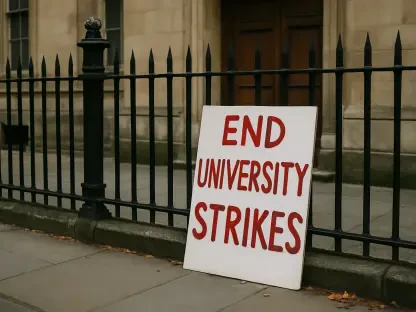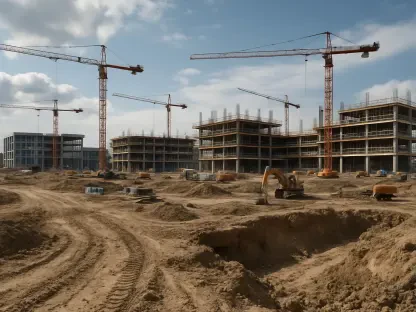In the heart of Minnesota, the Tri-City United (TCU) School District, spanning Le Center, Lonsdale, and Montgomery, stands at a pivotal moment with a $39.99 million bond referendum slated for a November vote. This ambitious proposal, approved by the TCU School Board in June, seeks to address pressing infrastructure issues and prepare for a surge in student numbers while aiming to keep the tax burden steady for local residents. The stakes are high as aging facilities, safety risks, and overcrowded spaces threaten the quality of education across the district. With a focus on both immediate fixes and long-term planning, this referendum could redefine the learning environment for thousands of students. The question looms whether the community will rally behind this substantial investment to secure the future of its schools, balancing fiscal caution with the undeniable need for upgrades.
Addressing Pressing Facility Challenges
Aging Facilities and Maintenance Struggles
The infrastructure at TCU schools has been pushed to its limits, with HVAC systems, electrical setups, and plumbing in desperate need of overhaul across multiple campuses. Many of these buildings, constructed decades ago, have seen patchwork repairs that no longer suffice to keep them functional. The wear and tear is evident in frequent breakdowns and inefficiencies that disrupt daily operations. Superintendent Kevin Babcock has pointed out that the Long-Term Facility Maintenance (LTFM) budget, meant to handle such upkeep, has been nearly exhausted after years of costly emergency fixes. Without fresh funding, the district risks falling into a deeper maintenance crisis, where even basic operations could be compromised. This bond referendum, therefore, is positioned as a lifeline to restore stability and prevent further decline in facility conditions.
Beyond the immediate repairs, the bond aims to establish a sustainable approach to maintenance that doesn’t rely on constant emergency funding. The $39.99 million would replenish the LTFM reserves, allowing for proactive rather than reactive solutions to infrastructure issues. This shift is critical as deferred maintenance often leads to higher costs down the line, with small problems snowballing into major expenses. By addressing the root causes now—such as outdated heating systems that struggle through harsh Minnesota winters—the district hopes to create a more reliable environment for learning. The focus is not just on fixing what’s broken but on building a framework that can withstand future wear, ensuring that students and staff aren’t left in crumbling spaces.
Safety as a Non-Negotiable Priority
Safety concerns within TCU facilities have emerged as a driving force behind the referendum, with glaring risks that can no longer be ignored. At the Le Center K-8 building, the absence of a fire suppression system stands out as a critical vulnerability, posing a direct threat to students and staff in the event of an emergency. Additionally, outdated ventilation systems compromise air quality, while aging plumbing raises concerns about clean water access. These issues, though often hidden from public view, are fundamental to maintaining a secure educational setting. The bond proposal allocates funds specifically for these upgrades, aiming to bring all campuses up to modern safety standards.
Equally important are the planned renovations to less visible but essential areas, such as bathroom facilities and roofing structures across the district. These upgrades at schools like Le Center K-8 are designed to eliminate hazards that could disrupt learning or endanger health. Roof leaks, for instance, can lead to mold growth, while outdated restrooms fail to meet current accessibility and hygiene needs. By prioritizing these behind-the-scenes improvements, the district underscores its commitment to functionality over flashiness. The goal is clear: to create spaces where safety isn’t a question but a guarantee, allowing educators and students to focus on academics without the looming worry of facility failures.
Preparing for Future Demands
Addressing Enrollment Spikes
With student enrollment projected to climb significantly in the coming years, particularly in Lonsdale, TCU faces an urgent need to expand its capacity to accommodate this growth. Over the next decade, the Lonsdale campus is expected to see the most substantial increase in numbers, straining already limited classroom space. The bond referendum includes plans for additional classrooms and facility expansions tailored to this area, though exact designs are still in development. This proactive approach aims to prevent overcrowding before it becomes unmanageable, ensuring that students aren’t squeezed into inadequate spaces that hinder learning. The focus on Lonsdale reflects a broader recognition of demographic shifts within the district’s boundaries.
At TCU High School, space constraints are already a daily challenge, with facilities like the weight room unable to serve the full student body. Currently, only a fraction of students can access this space at a time, while locker rooms for visiting athletic teams fall short of basic needs. The bond proposal targets these pain points with specific expansions, aiming to enhance both student and visitor experiences. Such improvements are not merely about comfort but about equity—ensuring all students have access to essential resources for physical education and extracurricular activities. By tackling these issues head-on, the district seeks to maintain a competitive edge in providing comprehensive educational opportunities amidst rising enrollment pressures.
Repurposing and Upgrading Spaces
Beyond adding new spaces, the referendum emphasizes innovative use of existing facilities to meet modern educational demands. At the Montgomery campus, for instance, an underutilized auditorium is slated for conversion into functional classrooms and learning areas, maximizing the potential of current infrastructure. This repurposing strategy reflects a pragmatic approach to growth, avoiding unnecessary construction costs while addressing space shortages. Additionally, plans for flexible learning environments aim to foster collaboration and adaptability, aligning with contemporary teaching methods that prioritize interactive and dynamic settings over traditional layouts.
Modernization extends to enhancing specialized programs, particularly in Career and Technical Education (CTE), with upgrades planned for agriculture and shop equipment across the district. These improvements are designed to equip students with practical, hands-on skills that prepare them for future careers in high-demand fields. By investing in updated tools and learning spaces, TCU aims to bridge the gap between classroom theory and real-world application, a critical component of student readiness. This focus on CTE underscores the district’s commitment to evolving with educational trends, ensuring that facilities support not just current needs but also the aspirations of tomorrow’s workforce.
Balancing Finances and Community Support
A Tax-Neutral Approach
One of the cornerstone elements of the $39.99 million bond proposal is its design to minimize financial strain on local taxpayers through a tax-neutral strategy. By replacing expiring debt levies with new funding, the district aims to keep the overall tax burden stable, avoiding sharp increases that could alienate residents. According to financial projections, the impact on median homeowners would be a modest $68 to $73 annually, translating to roughly $6 per month. This careful calculation, as highlighted by Superintendent Babcock, strikes a balance between addressing urgent facility needs and maintaining fiscal responsibility, ensuring that the bond doesn’t saddle the community with unsustainable debt or high interest costs.
This financial structure is not just about numbers but about trust—demonstrating to taxpayers that their contributions are being used efficiently. The decision to cap the bond at just under $40 million was deliberate, avoiding smaller amounts that could lead to higher interest over time. Instead, the proposal focuses on a “sweet spot” that covers critical upgrades without overreaching. Transparency in how funds will be allocated, from HVAC repairs to classroom expansions, further reinforces the district’s commitment to accountability. This approach aims to reassure residents that their investment directly translates into tangible improvements for students and staff.
Voices from the Community
Community engagement has played a pivotal role in shaping the referendum, with task forces providing valuable input on district priorities. These groups, facilitated by external consultants, spent months touring facilities and assessing conditions, ultimately endorsing a bond amount in the $35-40 million range. Their recommendations emphasized safety enhancements, expansion in Lonsdale, and bolstering CTE programs as top concerns, aligning closely with the final proposal. This collaborative process reflects a shared understanding of the challenges facing TCU schools and a collective desire to address them, grounding the referendum in local needs rather than top-down decisions.
Despite this alignment, some residents remain cautious about the bond’s scale, questioning whether such a large sum is necessary. These concerns highlight the importance of ongoing dialogue, with public meetings scheduled before the November vote to clarify the scope and benefits of the proposed projects. Many upgrades, like plumbing or air quality improvements, lack the visibility of new buildings but are no less essential, a point the district must effectively communicate. By fostering open discussions, TCU leaders hope to bridge gaps in understanding, building broader support for an investment that promises long-term stability. The success of this effort hinges on turning skepticism into confidence through clear, compelling explanations.
Reflecting on a Path Forward
Looking back, the journey to the $39.99 million referendum revealed a district grappling with decades of deferred maintenance and evolving educational demands. The Tri-City United School District meticulously crafted a plan that tackled everything from crumbling infrastructure to overcrowded classrooms, all while prioritizing safety and fiscal restraint. Community task forces lent their voices to ensure the proposal mirrored local priorities, even as debates over the bond’s size persisted. As the November vote approached, public meetings became a vital arena for addressing lingering doubts, paving the way for informed decisions. Moving forward, the district must continue to emphasize transparency, detailing how each dollar spent transformed aging facilities into safe, modern spaces. Engaging stakeholders with regular updates on project milestones could further solidify trust. Ultimately, the referendum’s legacy will depend on whether these upgrades delivered lasting value, setting a benchmark for how rural districts balance growth with responsibility.









